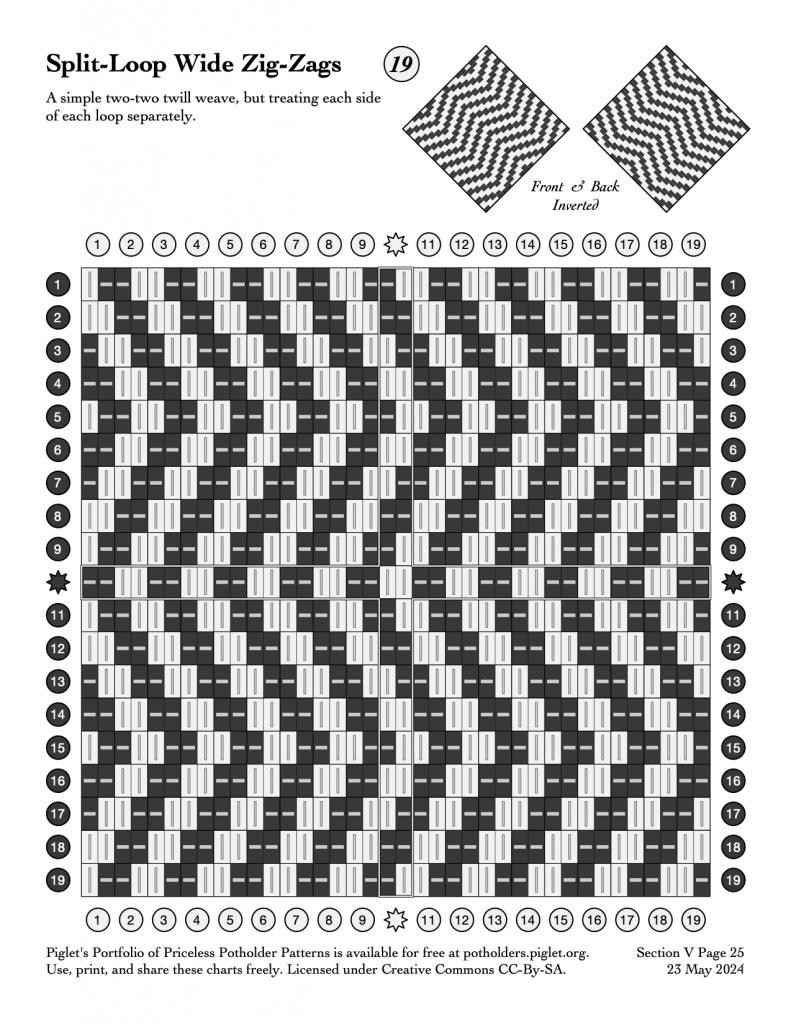For the fans of split-loop twill, I’ve posted some additional charts including more zig-zag variations and some new traditional-size charts for designs which previously only came in pro size.
Twills and split-loop techniques have circulated in the potholder world since at least the Nellie Bee days, more than eighty years ago, both because they have been repeatedly imported from the wider world of weaving — where twill and varying weights of warp and weft have been commonplace since before the the invention of writing — and because they have independently been reinvented by uncountable numbers of people sitting at their loom and deciding to try something new.
As much as we appreciate the many people who have shared their work as inspiration for our community — I think the first time I ever saw a split-loop twill zigzag potholder was in a post by Susan Lockhart in the Potholder People group on Facebook back in August 2021, but a bit of searching turned up split-loop diamond and zigzag twills being sold on Etsy in 2016, and no doubt there are innumerably more examples I haven’t found — these designs are too simple and common to think that anyone “owns” them; they’re indisputably in the public domain and the shared heritage of humanity as a whole.
With the benefit of that foundation, there’s room for limitless creativity and craftsmanship — choosing colors and materials, combining multiple techniques, and incorporating your own effort and intentions into your work. We can’t wait to see what you create with these elements!









